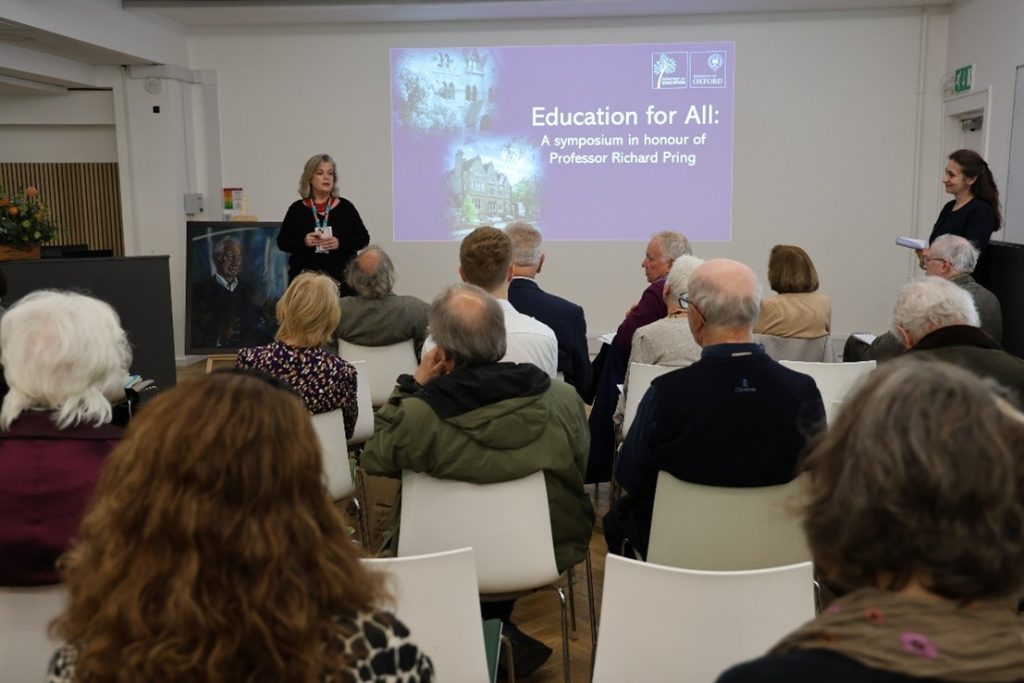This report, from a recently completed research project lead by Associate Professor Maia Chankseliani (Comaparative and International Education), presents the results of the analysis of apprenticeship in eight countries: Australia, Denmark, Egypt, England, Finland, Germany, India, and South Africa.
The study used documentary analysis as its central methodological approach, citing, summarizing, synthesizing, analyzing and critically reflecting on existing literature and data produced by international organizations, government agencies, universities, and research institutions.
Apprenticeship plays an important role in supporting young people in the transition between school and work. Countries with large, well-functioning apprenticeship systems generally have lower youth unemployment rates because of the relatively smooth school-to-work transition mechanism that such a system ensures, as well as a smaller sized cohort of NEETs (Not in Education, Employment, or Training).
This study makes a first-of-its kind attempt to compare participation in apprenticeship globally. Major problems are posed for international comparison by the unequal quantity and quality of data, both official and research, available. Data availability for apprenticeship internationally is more restricted and less reliable than for primary, secondary and tertiary (academic) education. In particular, comparable data are difficult to access, in part due to disparities in the definitions and measures employed by the international bodies when reporting on VET and apprenticeship. In addition, the terms used to define and refer to apprenticeship can disguise actual apprenticeship activity under a different name and vice versa.
There is a great diversity in apprenticeship organization, financing, institutional arrangements, and learning approaches in different countries. The apprentice demographic characteristics, as well as the differences in apprenticeship participation rates, indicate the varying degrees of appeal of apprenticeship to individuals and employers in the eight contexts. A fundamental assumption of the apprenticeship model is that there are benefits to both employers and individual learners.
For individuals, incentives to undertake apprenticeship may be linked to the process of learning as well as to the outcomes of that learning. The report examines two aspects of the process of learning that could motivate individuals to participate in apprenticeships – the appeal of learning through doing and the opportunities apprenticeships present for occupational socialization. The report also looks at two aspects of apprenticeship outcomes – the possibility of progression to employment or to additional education and learning while earning.
The analysis of incentives for employers shows a range of reasons related to their short-term interests and the needs of the production processes, technologies, and associated skills needs; longer-term benefits for the company’s staffing strategy; as well as the opportunity to make a contribution to the wider education and economic systems.
Despite all the factors that may serve as incentives for employers to offer apprenticeships, many firms seem to view apprenticeship arrangements as too costly, risky, and complex to justify the investment. Except for a few exceptions, such as Germany or Denmark, employers tend to be reluctant to invest in apprenticeship training, as they expect the broader E&T system – funded by individuals or the taxpayers – to produce appropriately-trained employees that they can hire using competitive pay strategies.
Firms are likely to invest more in recruitment and less in training if they are making decisions that are not coordinated with other firms. When firms are making decisions collectively, under the umbrella of chambers or associations, they are more likely to coordinate their skills investment strategies around collectively-beneficial outcomes linked to skills development as a common good, locally or nationally, for all those firms that are part of the given collective. Training apprentices is then viewed as a contribution to the ‘pool’ of talent for the sector. Countries that have not organically developed institutions for employer coordination and/or social partnership may face a relatively difficult task when seeking to expand apprenticeship provision. Such institutional structures, however, are historically determined within each country context, and are extremely difficult to construct from scratch.
Apprenticeship is often viewed as a panacea for a wide range of policy ills: unemployment, skills shortages and skills mismatch, social exclusion and economic problems. The most fundamental choice that currently confronts policy makers in countries with apprenticeship provision is the desired proportion (in terms of levels, occupations and learner volumes) of overall initial VET that apprenticeship is expected to cover. This choice is central because in some countries (including England and Australia) a policy discourse has developed wherein apprenticeship is sometimes seen as ‘the answer’ to what are often very vaguely or weakly specified policy issues.
Influencing the scale of policy expectations is central to achieving a realistic definition of who and what apprenticeship is for. In particular, what social and economic objectives is it assumed that apprenticeship is there to deliver, and how best is a balance between these two spheres of policy focus arrived at when there is a potential for tension between them? Any decision to afford priority to social inclusion objectives has far-reaching consequences, as there is then a potential tension between wanting apprenticeship to be seen (by employers, young people, parents and wider society) as a rigorous, high status route; and also wanting to try to deploy it as a mechanism for operationalising second chance, social inclusion goals for young people who have not flourished on the academic route and within mainstream schooling.
The fact that apprenticeship embraces learning within the workplace through a range of different on-the-job learning processes also means that apprenticeship policy needs to have a strong interest concerning the in-company capacity of the participating organisations to deliver high quality learning experiences. As a result, in most EU countries the national government offers support for training programs aimed at in-company trainers who are responsible for delivering the on-the-job elements of apprenticeship, and in some jurisdictions having appropriately trained trainers is a prerequisite before firms are allowed to take on apprentices. In other words, E&T policy and scrutiny extends into the firm and the workplace, which is a very different proposition from classroom based routes where policy need only be concerned with and regulate what happens within formalized educational settings.
See the final report here:
Chankseliani, M., Keep, E., & Wilde, S. (2017). People and policy: A comparative study of apprenticeship across eight national contexts (No. RR.9.2017). Doha, Qatar: World Innovation Summit for Education.








